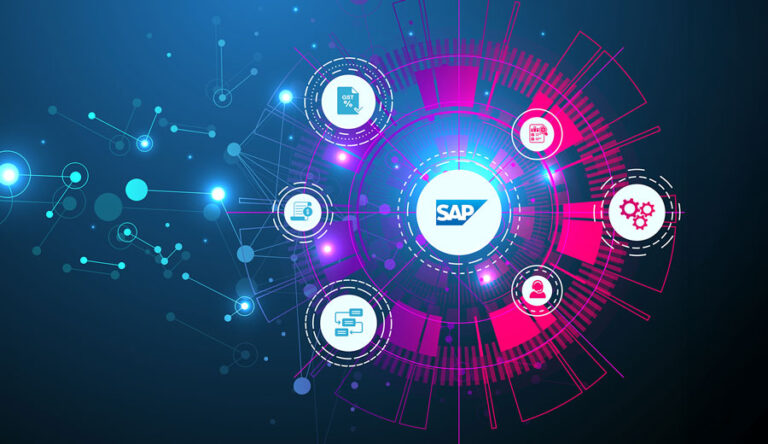Enterprises that rely on ERP to run their mission-critical operations are under constant pressure to modernize, optimize, and innovate. Whether it’s improving system performance, ensuring business continuity, or driving real-time insights, organizations now recognize the value of migrating SAP workloads to the cloud especially to Microsoft Azure Cloud.
This shift, often described as moving from “SAP to SAP on Azure,” is not merely a technology migration; it’s a strategic business transformation. Azure Cloud provides a powerful foundation for running SAP applications combining enterprise-grade infrastructure, scalability, built-in security, and advanced analytics capabilities that empower companies to extract more value from their SAP investments.
In this comprehensive guide, we’ll explore the key benefits of moving SAP to Azure, how it supports digital transformation, what makes Azure the best platform for SAP workloads, and how Embee Software helps organizations make the transition seamless and cost-effective.
What do you mean by SAP on Azure?
Before diving into the benefits, it’s essential to understand what “SAP on Azure” means.
SAP on Azure refers to running SAP applications such as SAP ECC, SAP S/4HANA, SAP BW/4HANA, and SAP Business One on Microsoft Azure’s cloud infrastructure. Instead of managing on-premises servers, networking, and storage, your SAP landscape runs in the Azure cloud giving you on-demand scalability, security, and integrated services across AI, data analytics, and collaboration.
Why Organizations Are Moving SAP Workloads to the Cloud
Enterprises across industries manufacturing, retail, BFSI, healthcare, and more are realizing that on-premises SAP deployments no longer offer the agility or resilience they need. The need for remote accessibility, faster upgrades, real-time insights, and disaster recovery has pushed organizations toward the cloud.
According to IDC, more than 70% of SAP customers plan to migrate to cloud-based infrastructure within the next three years. And among the available options, Microsoft Azure has emerged as the preferred destination due to its tight partnership with SAP and its certified cloud architecture for running mission-critical workloads.
The Strategic Advantages of Moving from SAP to SAP on Azure
Migrating SAP workloads to the Azure Coud is not a lift-and-shift projects, it’s a catalyst for digital modernization. Let’s explore the major benefits in depth.
1. Enhanced Performance and Scalability
One of the most immediate benefits of moving to SAP on Azure is the improved performance and scalability it delivers. Azure provides purpose-built infrastructure optimized for SAP HANA and other SAP workloads.
Whether you’re running SAP ECC or planning to move to SAP S/4HANA, Azure’s HANA Large Instances (HLI) ensure high-speed data processing and real-time analytics.
Key Highlights:
- Dynamic scaling: Quickly add or remove compute and storage resources as business demands change.
- Global data centers: Deploy SAP systems close to your users for low latency and better responsiveness.
- SAP-certified VMs: Azure offers the broadest selection of SAP-certified virtual machines ensuring compatibility, reliability, and optimized performance.
For enterprises struggling with on-premises infrastructure limitations slow performance, capacity issues, or high upgrade costs Azure brings instant elasticity and enterprise-grade power.
2. Reduced Total Cost of Ownership (TCO)
Migrating SAP to Azure can deliver significant cost savings not only by eliminating capital expenses but also by reducing operational overhead.
Cost Benefits Include:
- No upfront hardware investments – Pay only for what you use.
- Lower maintenance costs – Azure handles infrastructure upkeep, patching, and updates.
- Optimized resource utilization – Auto-scaling ensures you never overpay for unused capacity.
- Integrated tools – Use Azure Cost Management and Azure Advisor to monitor and optimize spending.
By moving SAP to Azure, enterprises can convert CapEx into OpEx, freeing up capital for innovation and growth initiatives. Over time, this leads to a lower total cost of ownership (TCO) and a more predictable cost model.
3. Improved Reliability and Business Continuity
Downtime is not an option when your business runs on SAP. Azure’s cloud infrastructure ensures high availability, built-in redundancy, and disaster recovery for critical workloads.
Azure Reliability Features:
- 99.99% uptime SLA for virtual machines.
- Automated backups and geo-replication for data durability.
- Disaster Recovery (DR) solutions through Azure Site Recovery.
- High-availability clusters for SAP HANA and application servers.
These features ensure uninterrupted operations even in the event of hardware failure or data center outages. Organizations can also perform non-disruptive maintenance and rapid recovery during migrations or updates.
4. Advanced Security and Compliance
Security remains a top concern for SAP customers. Azure provides a multi-layered security framework that protects SAP data, applications, and users.
Key Security Advantages:
- End-to-end encryption: Protects data in transit and at rest.
- Identity and access management (IAM): Role-based access and integration with Azure Active Directory.
- Threat detection and response: Azure Security Center uses AI to detect anomalies.
- Compliance with global standards: ISO, GDPR, SOC, HIPAA, and more.
Additionally, Microsoft works closely with SAP to ensure that SAP workloads on Azure meet compliance and governance requirements across regulated industries like banking, healthcare, and public services.
5. Seamless Integration with Microsoft Ecosystem
One of Azure’s biggest strengths is its integration with the broader Microsoft ecosystem. Organizations running Microsoft 365, Power BI, Dynamics 365, or Teams can connect them directly with SAP applications on Azure.
Example Integrations:
- Power BI + SAP: Create interactive dashboards with live SAP data.
- Teams + SAP: Enable business users to access SAP workflows directly from Teams.
- Dynamics 365 + SAP: Synchronize customer and supply chain data across systems.
- Power Platform: Automate processes using Power Automate and build custom apps using Power Apps.
This level of connectivity helps organizations unlock new efficiencies and turn SAP data into actionable insights without the need for complex integrations or third-party middleware.
6. Accelerated Innovation with AI and Analytics
Migrating SAP to Azure opens a world of AI and data analytics capabilities that simply aren’t possible in on-prem environments.
How Azure Enhances SAP Analytics:
- Azure Synapse Analytics – Combine SAP and non-SAP data for unified reporting.
- Azure AI + SAP – Automate predictive maintenance, fraud detection, or demand forecasting.
- Data Lake integration – Store and process large volumes of SAP data for machine learning use cases.
For example, a manufacturing company can use Azure’s ML models to analyze SAP production data and predict equipment failures saving costs and improving uptime.
7. Streamlined SAP S/4HANA Migration
As SAP phases out support for ECC by 2027, organizations are preparing to move to SAP S/4HANA. Running on Azure makes this transition smoother.
Migration Advantages:
- Certified for S/4HANA – Azure offers the largest set of SAP-certified instances.
- Simplified upgrades – Azure’s migration tools minimize downtime.
- Sandbox environments – Spin up temporary systems for testing and validation.
- Collaboration with SAP and Microsoft engineers – Joint support for migration projects.
8. Agility and Faster Time-to-Market
Cloud agility allows businesses to respond faster to change. SAP on Azure makes it easier to deploy new systems, test new processes, or scale operations without waiting for physical hardware or lengthy provisioning cycles.
Whether you’re expanding to new geographies or launching new product lines, Azure provides the speed and flexibility to meet market demands quickly and confidently.
9. Sustainable IT and Green Cloud Benefits
Microsoft’s commitment to carbon neutrality means that migrating SAP to Azure also helps you meet your sustainability goals.
Sustainability Benefits:
- Azure data centers use 100% renewable energy by 2025.
- Efficient cooling and resource allocation reduce energy waste.
- Built-in tools let you track and optimize your carbon footprint.
- For organizations with ESG targets, SAP on Azure offers a practical path toward sustainable digital transformation.
10. Partner Ecosystem and Support from Embee Software
Choosing the right partner is critical for a successful SAP to Azure migration. Embee Software brings decades of experience in cloud transformation, SAP solutions, and Microsoft technologies, making it one of India’s most trusted partners for SAP on Azure implementations.
How Embee Software’s Helps:
- End-to-end migration services – From assessment and design to deployment.
- Managed cloud operations – 24/7 monitoring, optimization, and support.
- Cost and performance optimization – Continuous tuning of workloads.
- Security and compliance audits – Ensuring regulatory alignment.
With Embee Software’s expertise, organizations can migrate faster, reduce risks, and extract maximum value from their SAP investments on Azure.
FAQs (Frequently Asked Questions)
Is Azure certified to run SAP workloads?
How long does an SAP on Azure migration take?
Will performance improve after migration?
What are the main cost benefits of SAP on Azure?
How secure is SAP on Azure?
Can I integrate other Microsoft tools with SAP on Azure?
Summing Up
The move from SAP On prem infrastructure to SAP on Azure is not just an IT decision, it’s a business transformation strategy. It empowers organizations to achieve higher efficiency, scalability, resilience, and innovation, all while reducing costs and environmental impact.
By combining SAP’s enterprise capabilities with Azure’s intelligent cloud platform, businesses unlock the full potential of digital transformation making them more agile, data-driven, and future-ready.
Partner with Embee Software, a Microsoft Gold Partner with deep SAP expertise. Our certified consultants help you plan, migrate, and optimize your SAP infra, securely, efficiently, and cost-effectively.


















































